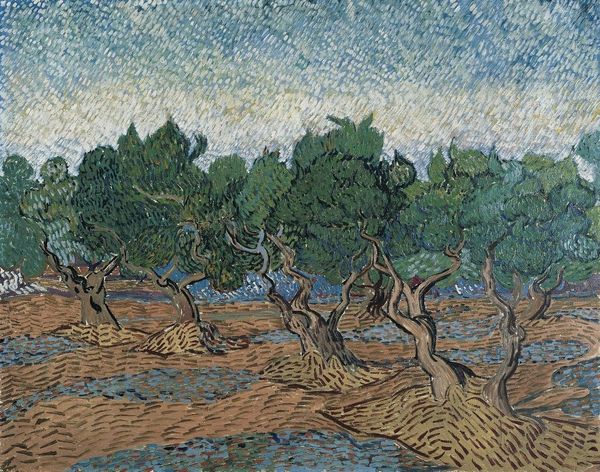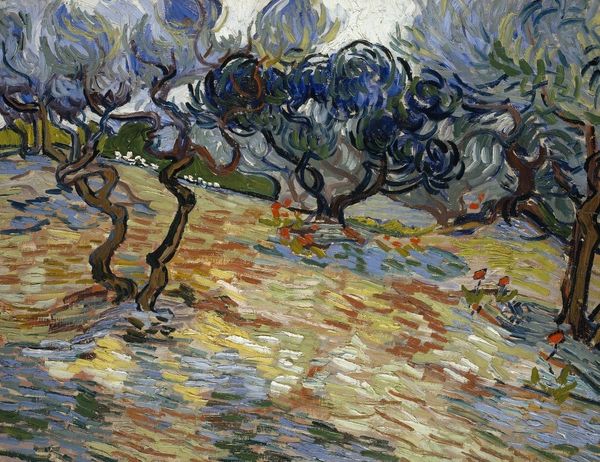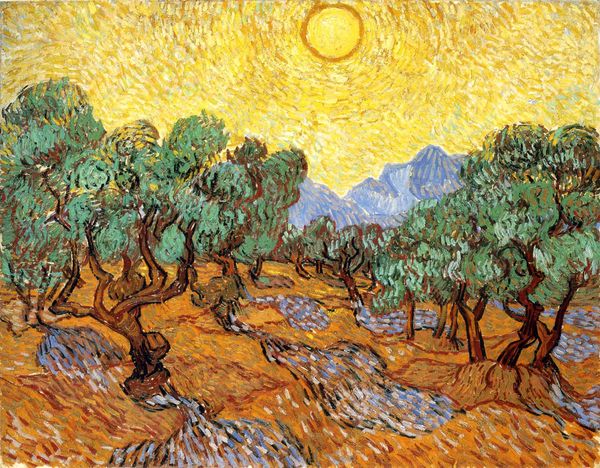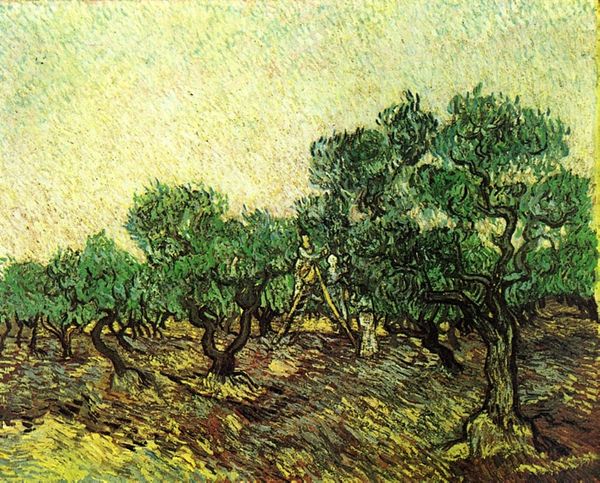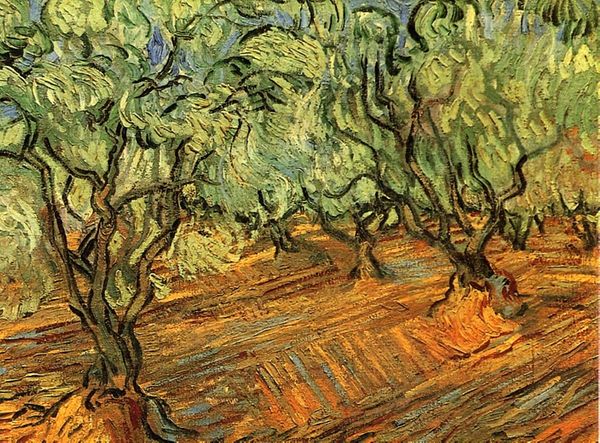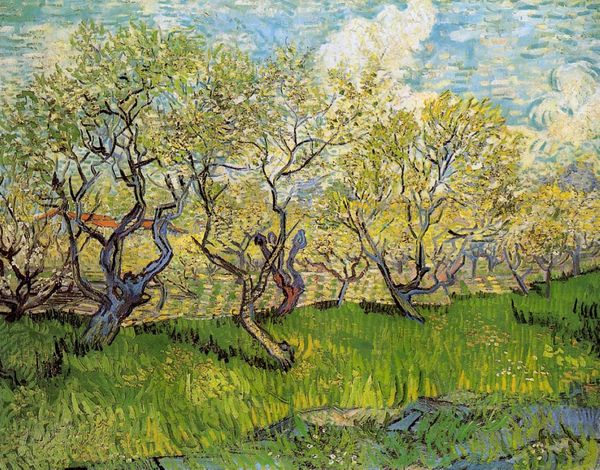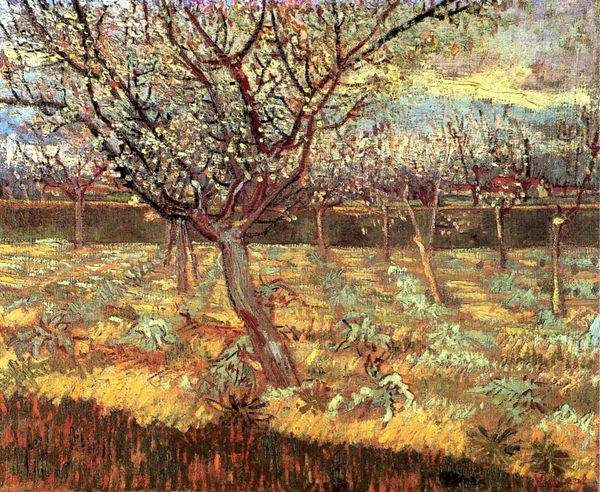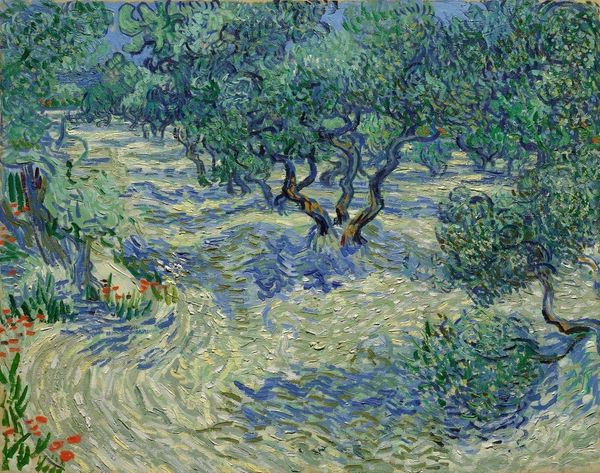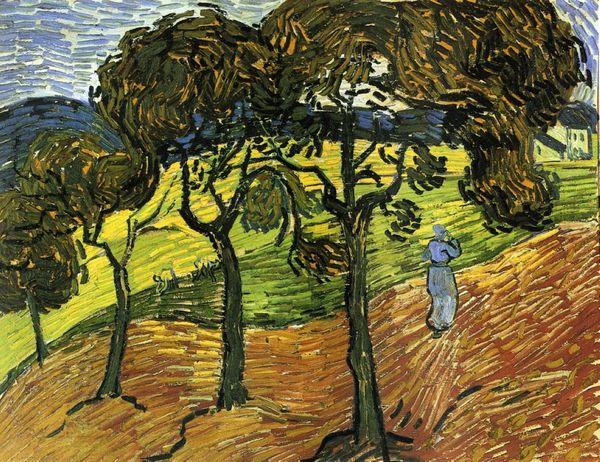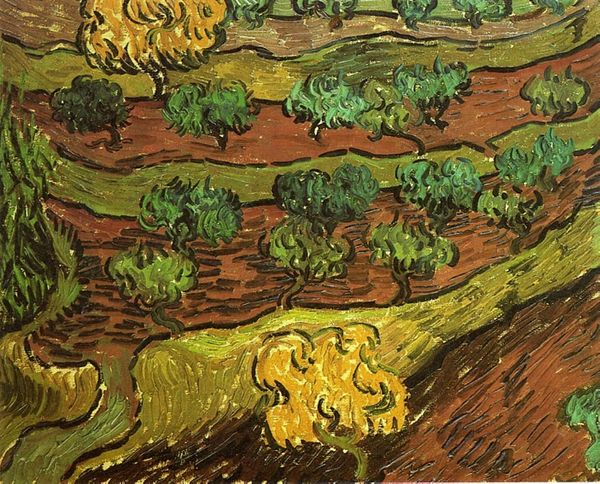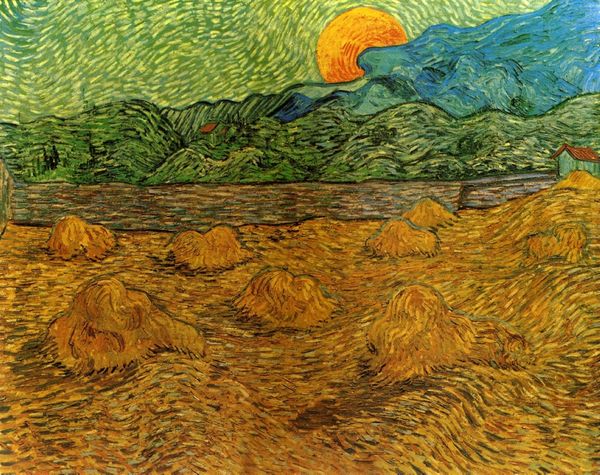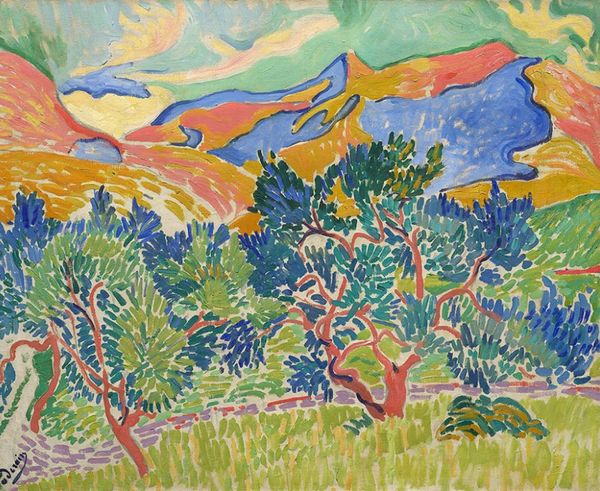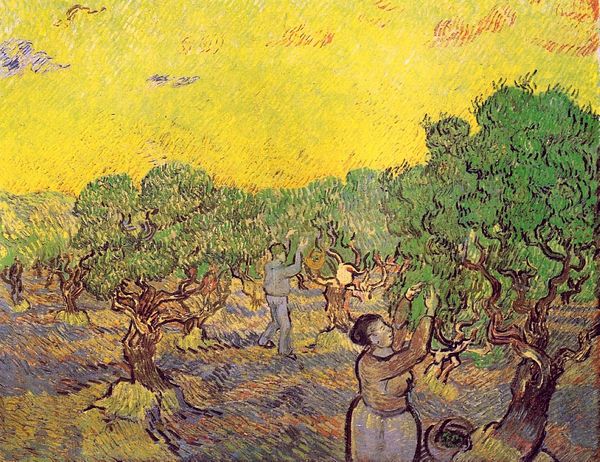
Dimensions: 93 x 74 cm
Copyright: Public domain
Curator: "Olive Grove – Orange Sky," painted by Vincent van Gogh in 1889. It's currently housed at the Gothenburg Museum of Art. The work vibrates with an energy that's almost unsettling, wouldn’t you say? Editor: Unsettling is right. Look at the frenetic brushwork; it feels almost woven together, a textile of pure pigment. You can practically feel the impasto. This isn’t just observation, this is tactile engagement. Curator: Absolutely. These olive trees, in the Christian symbolic tradition, represent peace and immortality. But here, their twisted trunks and swirling foliage seem more like expressions of inner turmoil, less like a pastoral scene and more like psychological insight. It brings forth a completely modern reading to well-worn symbolism. Editor: I wonder, though, about the source of that material energy. Olive groves in Provence weren’t just picturesque; they were workplaces, sites of agricultural labor. Consider the embodied labor embedded in the gathering, processing, and distribution of olives and oil – the very real economic conditions shaping the landscape he observed and reproduced on canvas. Curator: A landscape filtered, no doubt, through Van Gogh's uniquely expressive lens. It’s easy to get lost in the immediate biographical details about him being in Saint-Rémy, about his health struggles. Editor: Precisely. And let's remember the cost of his chosen medium. Oil paints, while now ubiquitous, were luxury goods. Van Gogh's access to materials, to even the basic canvas and pigment, was mediated by a complex network of economic and social relationships, most crucially with his brother Theo. Curator: And it is in this intense style of applying pigment—these repetitive strokes—the psychological intensity is built in layer upon layer. Editor: That layering is crucial, right? We can trace the genealogy of the materials themselves – from the earth, through industrial processing, to the artist's hand, and finally, to the canvas. The painting becomes an archive of its own making. Curator: It shows us a profound investment of emotion in rendering even the humblest of landscapes. The olive grove, reinterpreted, is not only alive—but also speaks to Van Gogh’s deeply felt spiritual life. Editor: It seems clear, however, that even in capturing this subjective expression, the painting reveals an interaction with the material conditions of labor and the very real processes of production embedded in what we conveniently call “nature.” Curator: Well said, to reconsider these layers certainly allows us to see the world of the artwork with more thoughtful depth. Editor: Indeed, now it looks as though even the color orange in the sky gains depth beyond the beautiful colors; a way of seeing the history of the place with this one glimpse.
Comments
No comments
Be the first to comment and join the conversation on the ultimate creative platform.
